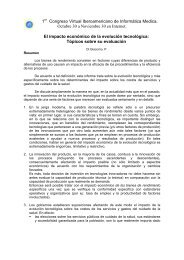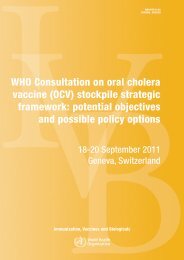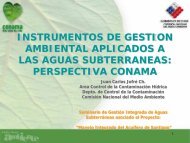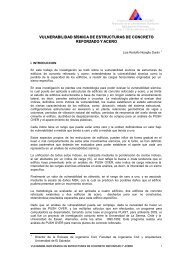a database of the National Library of M
a database of the National Library of M
a database of the National Library of M
You also want an ePaper? Increase the reach of your titles
YUMPU automatically turns print PDFs into web optimized ePapers that Google loves.
To present <strong>the</strong> first case <strong>of</strong> vinyl chloride related hepatic angiosarcomain Australia. A 51 year old male caucasian former polyvinyl chlorideautoclave cleaner in an Australian chemical plant developed hepaticangiosarcoma, presenting 15 years after his last exposure to vinylchloride monomer. He developed encephalopathy and died in oliguric renalfailure 21 days after admission to hospital. Hepatic angiosarcoma maydevelop in o<strong>the</strong>r workers similarly exposed. [Riordan SM et al; Med J Aust155 (2): 125-8 (1991)]**PEER REVIEWED**The cohort consisted <strong>of</strong> 10,173 men who had worked for at least one year injobs involving exposure to vinyl chloride prior to 1 January 1973. Thesemen were employed at 37 plants in <strong>the</strong> U.S., belonging to 17 companies.Observation <strong>of</strong> <strong>the</strong> mortality experience <strong>of</strong> <strong>the</strong> cohort was updated from 31December 1972 to 31 December 1982 (<strong>the</strong> study now covering 1942-1982). Atotal <strong>of</strong> 1,536 cohort members were identified as having died. The observedmortality, by cause, was compared with <strong>the</strong> expected based on U.S.mortality rates, standardized for age, race, and calendar time. Analysesby length <strong>of</strong> exposure, latency, age at first exposure, calendar year <strong>of</strong>first exposure, and type <strong>of</strong> products were performed. The study confirmedthat <strong>the</strong> vinyl chloride workers experience a significant mortalityexcesses in angiosarcoma (15 deaths), cancer <strong>of</strong> <strong>the</strong> liver and biliarytract (SMR = 641), and cancer <strong>of</strong> <strong>the</strong> brain and o<strong>the</strong>r CNS (SMR = 180). Inaddition, <strong>the</strong> study also found a significant mortality excess inemphysema/chronic obstructive pulmonary disease (SMR = 179). On <strong>the</strong> o<strong>the</strong>rhand, <strong>the</strong> study did not find any excess in ei<strong>the</strong>r respiratory cancer orlymphatic and hematopoietic cancer. This study also found an increase inbiliary tract cancers, independent from liver cancer. [Wong O et al; Am JInd Med 20 (3): 317-34 (1991)]**PEER REVIEWED**Increased levels <strong>of</strong> chromosomal abnormalities, compared to controlpopulations, were found in workers exposed to high levels <strong>of</strong> vinylchloride but not in workers exposed to less than 13 mg/cu m (5 ppm). [WHO;Environmental Health Criteria 215: Vinyl Chloride p. 223 (1999)]**PEERREVIEWED**An investigation into reproductive function in 2736 workers exposed tovinyl chloride in 13 PVC factories and 3442 workers in o<strong>the</strong>r factories notexposed to vinyl chloride showed no significant differences inreproductive outcome. However, in <strong>the</strong> female exposed group, <strong>the</strong> incidence<strong>of</strong> pregnancy complication was significantly higher than that <strong>of</strong> <strong>the</strong>control group, suggesting that vinyl chloride may effect <strong>the</strong> pregnancyprocess in female workers. [WHO; Environmental Health Criteria 215: VinylChloride p. 199 (1999)]**PEER REVIEWED**In patients with chronic occupational exposure, neurological disturbancesinclude sensory-motor polyneuropathy, trigeminal sensory neuropathy,slight pyramidal signs and cerebellar and extrapyramidal motor disorders.Psychiatric disturbances included neuras<strong>the</strong>nic or depressive syndromes.Sleeplessness and loss <strong>of</strong> sexual functions were frequently encountered.pathological EEG alterations were found in a high proportion <strong>of</strong> patients.[WHO; Environmental Health Criteria 215: Vinyl Chloride p. 196(1999)]**PEER REVIEWED**DNA damage & <strong>the</strong> formation <strong>of</strong> stable carcinogen-DNA adducts areconsidered critical events in <strong>the</strong> initiation <strong>of</strong> <strong>the</strong> carcinogenic process.This study was carried out to assess whe<strong>the</strong>r exposure <strong>of</strong> plastics industry
















